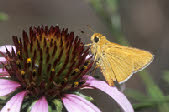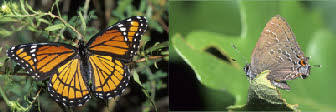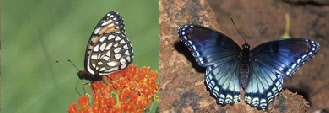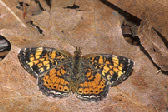The Butterflies of the World Foundation
A Non-





Strecker’s Giant-
Megathymus streckeri, Skinner, 1895
Subfamily Hesperiinae
Tribe Megathymini
Taxonomy
The family Hesperiidae includes all butterflies that are collectively called skippers because of their fast skipping flight. This family is the sole member of the Superfamily Hesperioidea. Whereas, the other five families of butterflies belong to the Superfamily Papilionoidea. So, skippers are considered butterflies, but they have a few traits different than the species of “True” butterflies found in the Superfamily Papilionoidea. Some of these traits include large eyes, short antennae (often with hooked clubs) and stout bodies. Most also have a very rapid flight with a fast, almost blurred, wing beat. There are about 3,500 species of skippers and they’re further divided into seven subfamilies. They occur worldwide with more found in the tropics. Most species are brown or tan, but some tropical members can be quite colorful.
All photographs, artwork, text and website design are the property of The Butterflies of the World Foundation (unless otherwise stated) and are protected under national and international copyright laws. Photographs, artwork or text on this website may not be reproduced in any way without prior written consent of The Butterflies of the World Foundation.
Megathymus streckeri, Square Butte, Little Missouri National Grassland, Golden Valley
County, North Dakota, 19 June 2004 Ref #:
I-

Soapweed Yucca, Yucca glauca, a common larval food plant, Square Butte, Little Missouri
National Grassland, Golden Valley County, North Dakota Ref #: F-

Soapweed Yucca, Yucca glauca, a common larval food plant, Square Butte, Little Missouri
National Grassland, Golden Valley County, North Dakota Ref #: F-

Soapweed Yucca, Yucca glauca, a common larval food plant, Lexington Wildlife Management
Area, Cleveland County, Oklahoma Ref #: F-
General Information:
Megathymus streckeri belongs to the subfamily Hesperiinae. This species is found
from southeastern Montana and southwestern North Dakota south to South Texas, west
to northwestern Arizona and southwestern Utah. Its preferred habitat includes sand
hills, rocky bluffs, short-
Lifecycle:
The larval food source includes various yuccas such as small soapweed, Yucca glauca, Buckley yucca, Y. constricta, fineleaf yucca, Y. angustissima, and Baileys yucca, Y. baileyi. To await receptive females, males perch and sometimes patrol all day around the host plants. Females glue eggs singly on leaves of the host plant. A young caterpillar burrows into the stem to the root without making a tent. After hibernating in the burrow, the caterpillar surfaces through the stem or soil and constructs a tent of silk, soil, and plant debris in which to pupate. Chrysalids can move about in their tent.

Megathymus streckeri, Square Butte, Little Missouri National Grassland, Golden Valley
County, North Dakota, 18 June 2004 Ref #:
I-